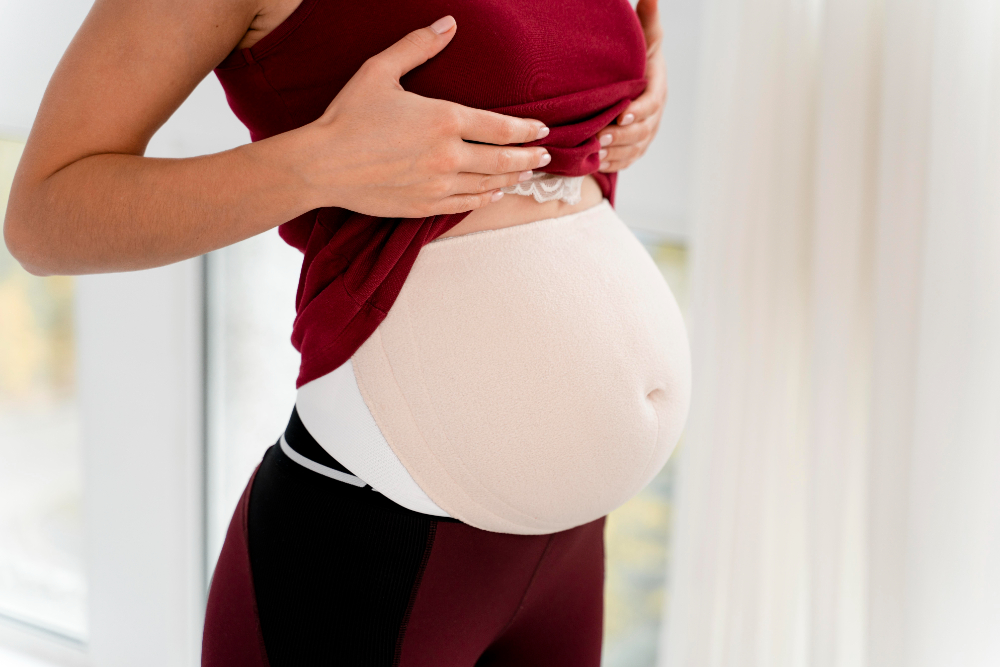Pregnancy is a beautiful journey, but it often comes with physical discomforts like back pain, swollen ankles, and pelvic pressure. While there are various remedies to alleviate these issues, Kinesio tape has gained popularity among expectant mothers as a non-invasive, drug-free solution. In this article, we’ll explore what Kinesio tape is, its benefits during pregnancy, how to use it safely, and expert tips for getting the best results. What Is Kinesio Tape? Kinesio tape, also known as elastic therapeutic tape, is a stretchy, adhesive tape designed to support muscles and joints without restricting movement. Originally developed in the 1970s for athletes, Kinesio tape is now widely used in physical therapy, sports medicine, and even maternity care. Made from cotton and medical-grade adhesive, it’s water-resistant, breathable, and gentle on the skin. When applied correctly, the tape can lift the skin slightly, improving circulation, reducing pressure on painful areas, and providing support. Benefits of Kinesio Tape During Pregnancy Is Kinesio Tape Safe During Pregnancy? Yes, Kinesio tape is generally safe for use during pregnancy when applied correctly. Since it’s non-invasive and does not involve medication, it’s a popular choice for expectant mothers looking for natural pain relief. However, keep the following in mind: How to Use Kinesio Tape Tips for Getting the Best Results Frequently Asked Questions About Kinesio Tape for Pregnancy 1. Can I apply Kinesio tape myself?Yes, but it’s best to have a professional demonstrate the correct application technique first. This ensures safety and effectiveness. 2. Does Kinesio tape hurt to remove?No, removing the tape shouldn’t hurt if done carefully. Use warm water or baby oil to loosen the adhesive before peeling it off. 3. Can Kinesio tape replace a maternity belt?Kinesio tape offers similar support to a maternity belt but is less bulky and more discreet. However, some women may prefer a belt for more substantial support. 4. Are there any side effects?While rare, some people may experience skin irritation or an allergic reaction to the tape’s adhesive. Always do a patch test before full application. 5. Is Kinesio tape covered by insurance?Some insurance plans may cover Kinesio taping if it’s deemed medically necessary. Check with your provider for details. Conclusion Kinesio tape is a versatile and effective tool for managing common pregnancy discomforts like back pain, pelvic pressure, and swelling. Its non-invasive nature and ability to support the body make it a popular choice for expectant mothers seeking natural pain relief. By understanding how to use Kinesio tape safely and effectively, you can enjoy greater comfort throughout your pregnancy. Always consult with your healthcare provider before starting any new treatment, and consider seeking professional guidance for optimal results. With the right approach, Kinesio tape can be a game-changer for a healthier, more comfortable pregnancy journey.
How Many Ultrasounds During Pregnancy? A Comprehensive Guide
Ultrasounds are an essential tool in modern prenatal care, providing valuable insights into the health and development of a growing baby. Many expectant parents wonder, “How many ultrasounds will I need during pregnancy?” The answer depends on individual circumstances, medical guidelines, and the healthcare provider’s recommendations. In this article, we’ll explore the purpose of ultrasounds, the typical schedule during pregnancy, and factors that may influence the number of scans. What Is an Ultrasound? An ultrasound, or sonogram, is a medical imaging technique that uses sound waves to produce real-time images of the baby inside the womb. These scans help monitor fetal development, detect potential complications, and provide reassurance to parents. Ultrasounds are non-invasive, painless, and safe for both the mother and baby when used appropriately. They’re performed by trained technicians or healthcare providers, typically in a clinic or hospital setting. How Many Ultrasounds Are Typically Done During Pregnancy? In a normal, low-risk pregnancy, most women will have two to three ultrasounds: Additional Ultrasounds in High-Risk Pregnancies For women with high-risk pregnancies or specific medical conditions, additional ultrasounds may be necessary. These situations include: Types of Ultrasounds During Pregnancy There are different types of ultrasounds used at various stages of pregnancy, depending on the purpose of the scan. How Long Does an Ultrasound Take? The length of an ultrasound depends on its purpose: Are Ultrasounds Safe for the Baby? Yes, ultrasounds are considered safe when performed by trained professionals and used for medical purposes. They do not use ionizing radiation like X-rays, making them a safe choice for monitoring pregnancy. However, experts recommend avoiding non-medical ultrasounds (such as keepsake imaging at commercial facilities) to limit unnecessary exposure. Factors Influencing the Number of Ultrasounds during pregnancy Several factors determine how many ultrasounds a pregnant woman will have: Questions to Ask Your Doctor About Ultrasounds Preparing for an Ultrasound Conclusion In most pregnancies, two to three ultrasounds are standard, with additional scans recommended for high-risk situations or medical concerns. Ultrasounds provide invaluable information about your baby’s health and development while offering parents an opportunity to bond with their little one. If you have questions or concerns about the number of ultrasounds during your pregnancy, consult your healthcare provider. They will tailor a plan to meet your specific needs, ensuring the healthiest outcome for both you and your baby.


